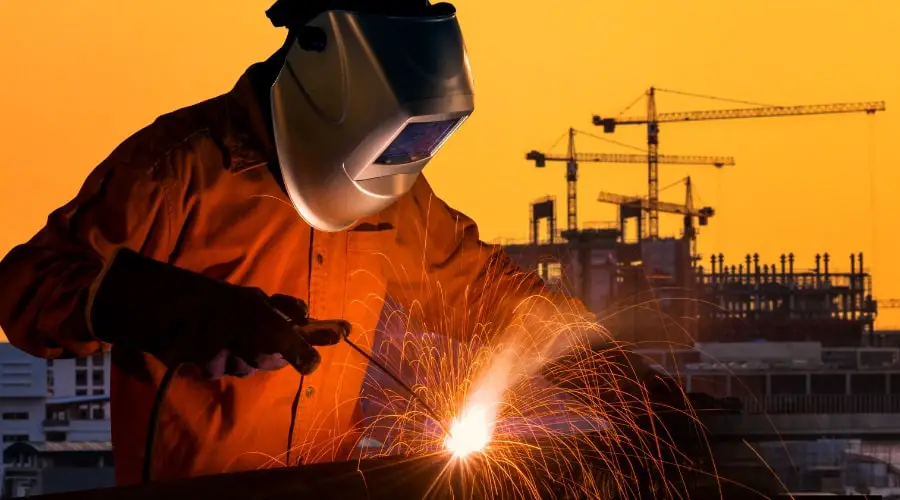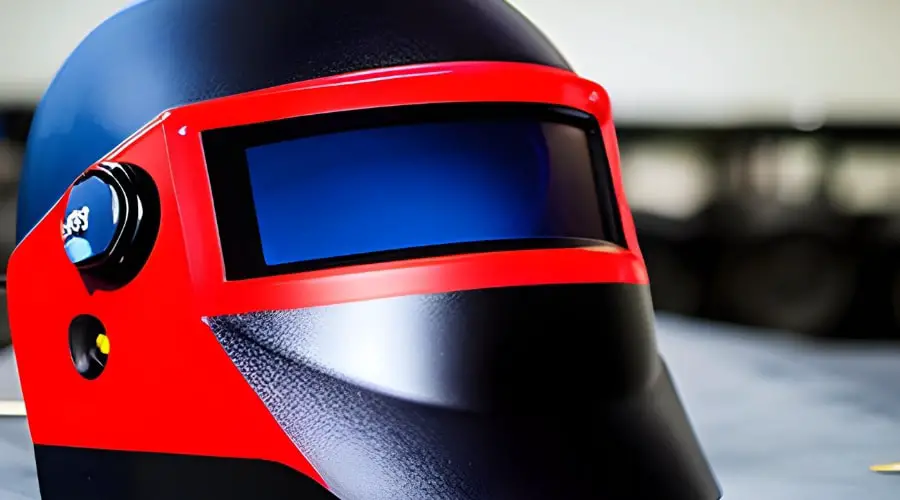Welding helmets are an essential piece of equipment for any welder, ensuring their eyes are protected from harmful radiation. The introduction of the auto-darkening lens revolutionized this industry, promising improved protection, comfort, and productivity. In this article, Wondering to Know Auto Darkening Lens for Welding Helmets.

The Importance of Auto Darkening Lens in Welding
An auto-darkening lens not only provides critical protection for a welder’s eyes, but it also enhances the overall welding process.
Benefits for the Welder
A welder can enjoy a variety of benefits from using an auto-darkening lens, such as reduced neck strain from not having to flip the helmet up and down and improved weld quality due to consistent visibility.
Safety Aspects
The auto-darkening feature helps protect the welder’s eyes from sudden flashes of bright light, which could lead to a condition known as ‘arc eye’ or ‘welder’s flash’.
Efficiency Aspects
This technology allows for better accuracy and efficiency, as the welder can see the weld puddle and joint clearly without having to adjust the helmet constantly.
How Auto Darkening Lens Work
Auto-darkening lenses use LCD technology to automatically adjust the shade of the lens in response to the intensity of light produced by the welding process. When the welding arc is struck, sensors on the lens detect the light and darken the lens to a pre-set shade within milliseconds.
Types of Auto Darkening Lens
There are various types of auto-darkening lenses available on the market, each with its unique features and benefits.
Passive Lens
These are the simplest form of auto-darkening lenses. They darken to a fixed shade (usually 10) when exposed to bright light.
Solar-Powered Lens
These lenses use solar cells to power the auto-darkening feature, making them a cost-effective and environmentally friendly option.
Battery-Powered Lens
These lenses use replaceable batteries to power the auto-darkening feature. They offer a reliable, constant source of power but require periodic battery changes.
Selecting the Right Auto Darkening Lens
Choosing the right auto-darkening lens depends on a variety of factors, including the type of welding you do, your budget, and personal preference.
Considerations
Some things to consider when choosing an auto-darkening lens include the number of sensors, reaction time, shade range, and power source.
Features to Look for
Look for features such as adjustable sensitivity and delay controls, a grind mode for grinding tasks, and a large viewing area for better visibility.
Proper Usage of Auto Darkening Lens
Using an auto-darkening lens properly is just as important as choosing the right one. It includes adjusting the lens’s settings to match your welding application and ensuring it’s securely fitted in your helmet.
Maintenance of Auto Darkening Lens
To keep your auto-darkening lens in top shape, regular maintenance is crucial.
Cleaning
Cleaning your lens regularly can prevent dirt and dust from affecting its performance. Use a soft cloth to gently wipe the lens and avoid using harsh chemicals that could damage it.
Replacing Batteries (if applicable)
If your auto-darkening lens uses batteries, make sure to replace them regularly. A dim or non-responsive lens might be a sign of a low battery.
Popular Brands of Auto Darkening Lens
There are several reputable brands in the market that offer high-quality auto-darkening lenses. These include Lincoln Electric, Miller Electric, and Hobart, among others.
How to Install an Auto-Darkening Lens
Installing an auto-darkening lens is a straightforward process. It involves removing the existing lens from your welding helmet and replacing it with the auto-darkening lens, ensuring it fits securely.
How to Troubleshoot a Malfunctioning Auto Darkening Lens
If your auto-darkening lens is not functioning correctly, there could be a few possible reasons. It could be due to a low battery, obstructed sensors, or damage to the LCD elements.

The Future of Auto-Darkening Lens
As technology continues to evolve, the future of auto-darkening lenses looks promising. Expect to see advancements in lens technology that offer even faster response times, better energy efficiency, and improved user comfort and convenience.
Frequently Asked Questions:
What is the average lifespan of an auto-darkening lens?
The lifespan of an auto-darkening lens can vary, but on average, it should last several years with proper care and maintenance.
Can an auto-darkening lens be repaired?
Some issues with an auto-darkening lens can be fixed, like replacing batteries or cleaning obstructed sensors. However, damage to the LCD elements usually means the lens needs to be replaced.
Are auto-darkening lenses safe for all types of welding?
Yes, auto-darkening lenses are safe for all types of welding, provided they are set to the correct shade for the intensity of the arc.
How do I know if my auto-darkening lens isn’t working correctly?
If your lens isn’t darkening fast enough or at all, it might not be working correctly. Other signs include a flickering display or a lens that stays dark even when there’s no arc.
Can I use an auto-darkening lens for grinding tasks?
Yes, many auto-darkening lenses come with a grind mode, which allows you to use the helmet for grinding tasks without the lens darkening.
Conclusion
Auto-darkening lenses have revolutionized the world of welding, providing welders with an excellent combination of safety, efficiency, and convenience. By understanding how these lenses work and how to choose and maintain them, you can ensure you’re getting the most out of your welding helmet.
Helmetslab is a website that focuses on providing in-depth reviews and information about different types of helmets, including motorcycle helmets and others helmets. I am writing a post with proper research on the info that helps helmet users.

